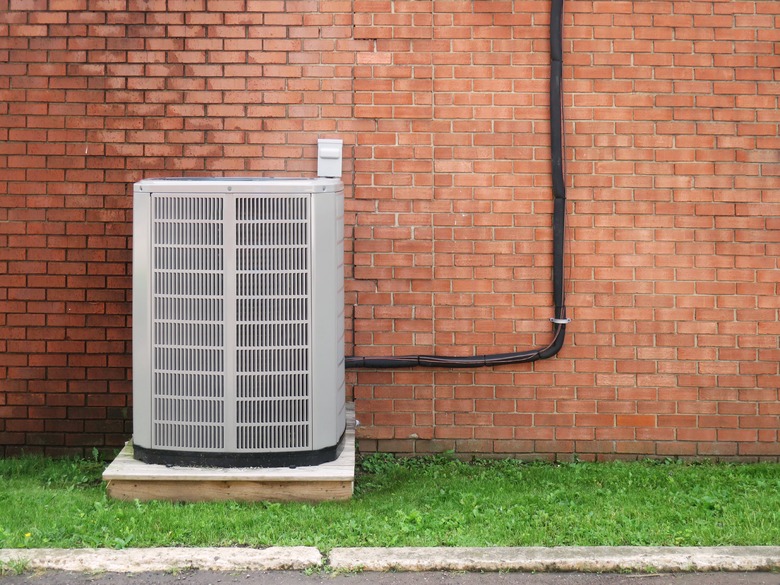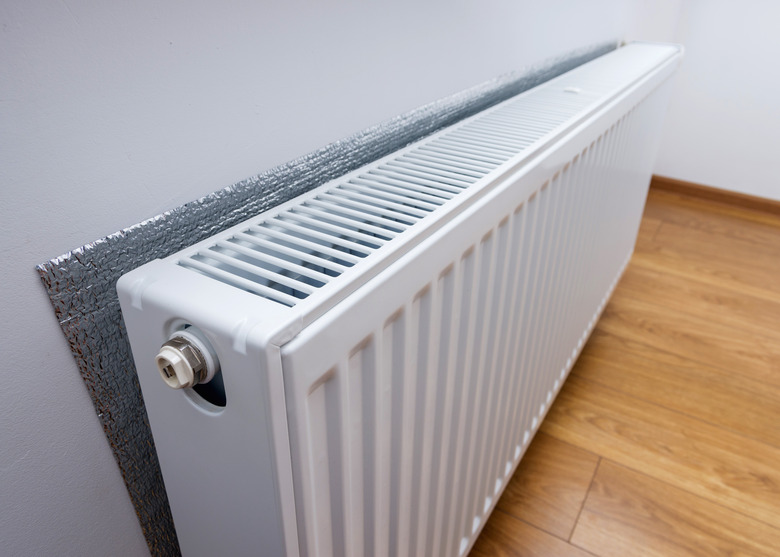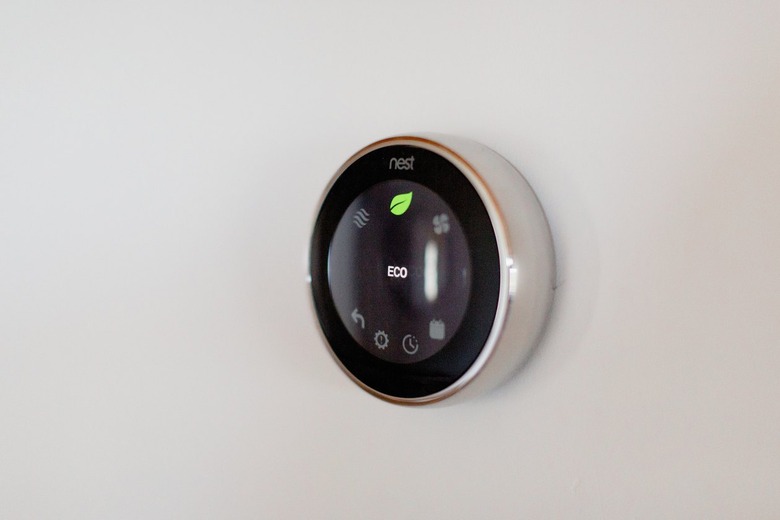What Do HVAC Systems Do For Your Home?
We may receive a commission on purchases made from links.
Stand-alone heating systems qualify as partial HVAC systems (that's what the "H" stands for), as do stand-alone air conditioning systems (designated by the letters "AC"), but when you combine the two and add "V" for ventilation — which is perhaps the most important function — you have a full-on HVAC system. It provides a home with thermal comfort and ventilation, which make modern living congenial and convenient.
Ventilation is of utmost importance because modern buildings are so well-insulated and tightly sealed that outside air can't enter easily. Much of the air used by the HVAC system is recirculated through a series of filters that remove as many allergens and other pathogens as possible, and efficient filtration has never been as important as during the COVID-19 pandemic. A well-designed and properly functioning HVAC system maintains a comfortable temperature, keeps the air breathable, prevents disease and does all this while consuming as little energy as possible.
Tip
An HVAC system regulates the temperature inside a building and maintains air quality, both of which are necessary for health and comfort.
Configuration of a Typical HVAC System
Configuration of a Typical HVAC System
The heart of an HVAC system is a device that regulates air temperature. It can be as basic as a gas or electric heater or an air conditioner or as sophisticated as a heat pump that does double duty as a heater and a cooler. A blower sends conditioned air through a ductwork system that distributes the air throughout the house when the thermostat, which monitors indoor temperature, sends the signal. Ducts are typically made of galvanized steel and have a rectangular cross-section so they will fit behind walls and underneath floors. They terminate in floors and walls, where they are protected by vent covers.
If that were all there is to it, the heating and cooling system would soon run out of air to circulate, so an HVAC system also often includes a system of return ducts that recirculate air back to the source. Air that cycles through the HVAC system over and over can become stale, however, so many systems also include an air exchanger that exhausts some of the air outside the building and exchanges it with fresh air from outside to improve indoor air quality.
Small houses and apartments sometimes rely on ductless systems, which consist of a wall-mounted heater or air conditioner connected to an outdoor compressor. Each of these split systems can regulate the temperature in a single room but not a whole house, and they do not provide ventilation. On the plus side, ductless systems don't require ductwork, which is expensive to install, and they also consume less energy than central forced-air HVAC units.
Every House Needs a Heating System
Every House Needs a Heating System
Most of the people living in North America experience freezing temperatures in winter, and for them, a heating system is more than a convenience — it's a matter of survival. In the early part of the 20th century, it was common to supply heat by burning coal or oil in a furnace or by boiling water and circulating it through a system of radiators. Although these systems still exist in some older homes, they are inefficient and have largely been replaced by more modern central heating equipment, such as gas or electric furnaces or heat pumps.
Heat pumps, which are appropriate for the more temperate southern parts of the United States, work on a different principle than furnaces. Whereas a furnace produces heat directly by either burning gas or using electric heating coils, a heat pump, with the help of an air handler, draws heat from the outdoors air using a process similar to that used by an air conditioner. However, while an air conditioner exhausts the warm air outside and recirculates the cooled air, a heat pump recirculates the warm air and exhausts the cooled air by reversing the flow of refrigerant. This reversal makes it possible to both heat and cool a house with the same system.
Not all houses rely on central forced-air heating. Radiant heat, which is supplied by hot water pipes or electric heating elements installed in the floor, is an energy-saving alternative to forced air that relies on conduction for heat distribution. Baseboard heaters, which may be hydronic or electric, rely on convection. In houses with hydronic systems, hot water may be supplied by a boiler, and a thermostat regulates temperature by controlling the circulation of the water through the pipes.
The Basics of Air Conditioning Units
The Basics of Air Conditioning Units
In the summer months, air conditioning systems are just as important for maintaining a comfortable environment as heating systems are in the winter, especially during periods of extreme heat. While it is possible to build a refrigeration system that works by burning natural gas or propane, this is rare, and most AC units run on 240-volt electricity. The most common central air systems are split systems in which the blower is located indoors, and the condenser unit and its refrigeration coils are outside, usually just next to the house.
An air conditioner doesn't so much produce cool air as it does draw heat out of the indoor air while removing humidity. A central air conditioning system has to have a network of return vents that allows the unit to circulate air from the building over the refrigeration coils, extract and exhaust the heat and humidity while recirculating the cooled air throughout the building. This circulation and recirculation is often performed by an air handler, which houses blowers, filters and sometimes the refrigeration coils. The refrigeration coils sit inside the plenum, which is the top part of the air handler where the ductwork attaches, so the cold air goes straight into the ducts. In a system that includes a furnace, the coils are just above the heat exchanger, and both the air conditioner and furnace use the same ductwork system.
Putting the "V" in HVAC
Putting the "V" in HVAC
Ventilation and air conditioning go hand in hand because without ventilation, recirculated air gets stale, and it collects moisture, which can lead to mold growth and other problems. You could open a few windows to allow fresh air to circulate, but you'd lose conditioned air, forcing the system to work harder and driving up your energy costs. Ventilation is also important in the winter when the furnace or heat pump is running, and the air in the house is drier than normal.
Ventilation is commonly provided by an air exchanger, and there are two types. An Energy Recovery Ventilator transfers both conditioned air and humidity from outside and is a good choice for people in cold climates whose homes tend to dry out when the furnace is on, while a Heat Recovery Ventilator, which transfers only conditioned air, is best for homes that suffer from chronically high humidity. Ventilation systems also filter the air, which not only protects occupants from dusty air and the pathogens that hitch a ride on dust particles but also the mechanical equipment in the HVAC system. Good airflow is essential to efficient operation of all HVAC components, so regular filter cleaning or replacement is a must.
Ventilation is of the utmost importance in bathrooms, which are the highest-humidity rooms in the house, and although an exhaust fan isn't necessarily required if the bathroom has openable windows, most bathrooms have at least one. Judicious use of the fan whenever someone takes a shower prevents mold and other damage associated with humidity and condensation.
A Thermostat Controls the System
A Thermostat Controls the System
Most modern HVAC systems are controlled by programmable electronic thermostats that monitor room temperature and send a signal to turn on the system when heating or air conditioning is needed. The thermostat for a convertible heat pump also includes a switch that changes the function from heating to cooling. The placement of the thermostat is important because if it's in a sunny spot, behind a bookshelf or above an air vent, it can't accurately monitor the room conditions. It's usually on an interior wall near the center of the home and as far as possible from doors and windows.
Contemporary thermostats often incorporate Wi-Fi features that make them the ultimate in convenience. Rather than getting up in the middle of the night to adjust the temperature setting, you can reprogram the thermostat using your mobile device. This gives you convenient control of your living environment and helps you get the most efficient use of your heating and cooling system.


